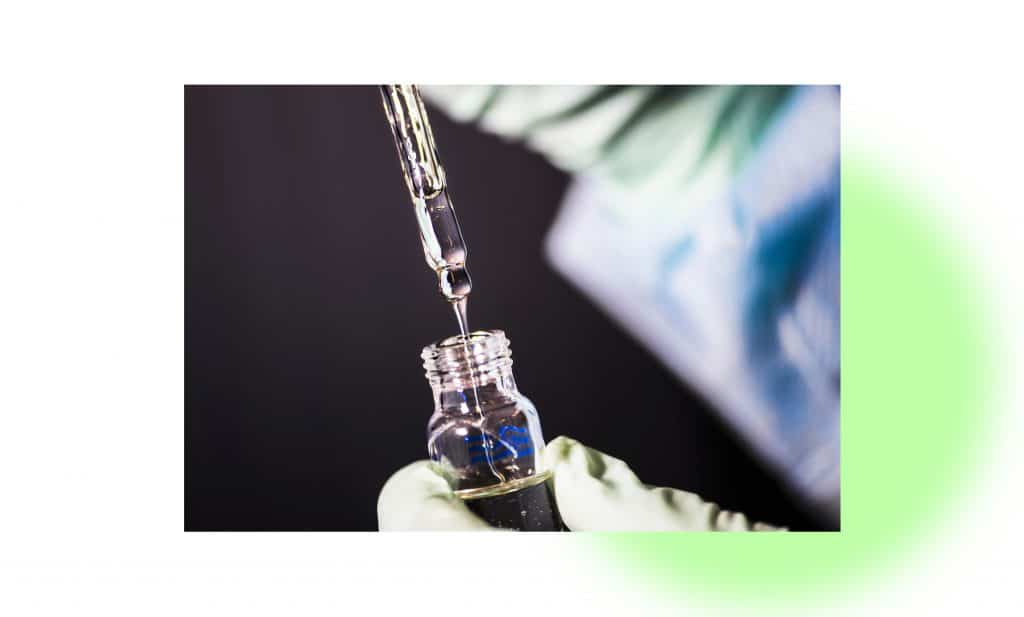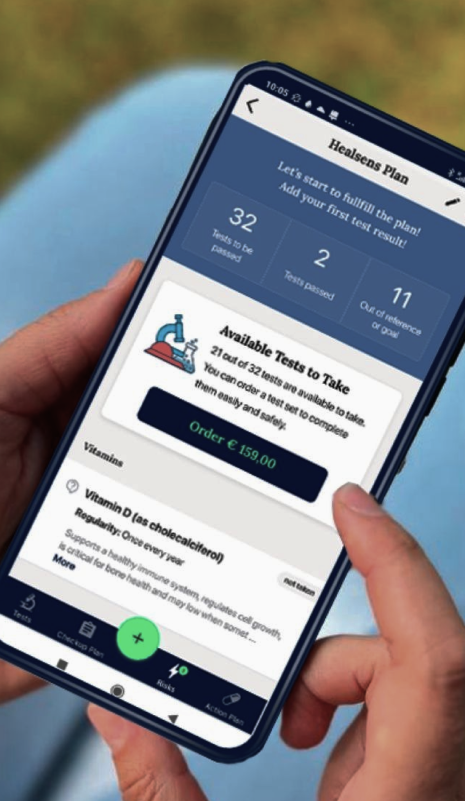Treatment For Vitamin D Deficiency

Understanding the importance of vitamin D for health at any age is crucial. Since low levels of vitamin D are common, it is important to know how to treat it. We will discuss various ways to improve health through sunlight exposure, proper nutrition, and the use of vitamin D supplements as part of the treatment for vitamin D deficiency. Additionally, we will explore how individual characteristics can influence the success of achieving healthy vitamin D levels, as well as determine safe dosages for its maintenance.
This article was last reviewed by Svetlana Baloban, Healsens, on October 24, 2020. This article was last modified on 29 October 2020.
Let us start with how we define vitamin D deficiency.
In summary, a deficiency occurs when the serum 25-hydroxyvitamin D level is less than 20 ng/ml (50 nmol/L)1234.
If your serum 25-hydroxyvitamin D level is between 20 and 30 ng/ml (50 to 75 nmol/liter), then we are talking about vitamin D insufficiency.
Values of less than 10 ng/ml refer to severe vitamin D deficiency. We will analyze the approach to treat this deficiency separately.
Treatment for vitamin D deficiency
Sunbathing
Sunbathing, mentioned in the article about the influence of vitamin D on health, is an excellent way to compensate for vitamin D deficiency. Sunlight (ultraviolet) promotes the formation of about a dozen beneficial compounds, including not only vitamin D but also nitric oxide (NO5), which is beneficial for reducing blood pressure, cardiovascular diseases, and metabolic syndrome. The skin contains significant reserves of nitric oxide, which, when exposed to ultraviolet light, can be converted into NO and enter the systemic circulation. Studies on humans show that this process can cause dilation of arterial vessels and reduction in blood pressure.
IN THIS ARTICLE
RELATED ARTICLES
It is also noted that the impact of ultraviolet radiation can suppress clinical symptoms of multiple sclerosis independently of vitamin D synthesis 5. Sunlight is also beneficial for maintaining healthy erectile function. However, it is worth remembering that UV radiation remains a proven carcinogen. What to do in this situation? It is recommended to consider the option of “healthy sun exposure”, when you are in the sun during the safest times – before 10 in the morning and after 4 in the evening. It is important to remember that sunscreen with a sun protection factor of 30 can reduce vitamin D synthesis in the skin. Additionally, people with naturally dark skin have built-in sun protection and require at least three to five times longer exposure to produce the same amount of vitamin D6. Choose the safest times for sunbathing without sunscreen.
Food
Another way to increase the level of vitamin D in the body is through the consumption of food products. Very few foods naturally contain or are enriched with vitamin D. However, in combination with sunbathing, food products can also be beneficial. Pay attention to foods such as fatty fish (salmon, mackerel, tuna), egg yolks, cheese, liver, and vitamin D-fortified dairy products and cereals – they can become a good source of this vitamin.
In addition to sunbathing, in case of vitamin D deficiency (especially at critical levels when the level of 25(OH)D is less than 20 ng/ml), it is advisable to take vitamin D in the form of supplements. It is worth noting that the increase in the level of 25(OH)D when taking vitamin D supplements is highly individual. In the next chapter, we will delve into the issue of vitamin D dosages through supplements recommended at present.
Vitamin D Deficiency Treatment Using Supplements
Vitamin D deficiency is defined when the level of 25(OH)D is below 20 ng/mL. It is important to realize that unprotected sun exposure is the primary source of vitamin D for both children and adults. Vitamin D synthesized in the skin can remain in the blood at least twice as long as vitamin D obtained from external sources. However, if opportunities for sunbathing are unavailable, considering vitamin D supplementation becomes advisable. The amount of vitamin D needed to treat deficiency largely depends on the degree of deficiency and key risk factors. Let’s delve into clinical recommendations for treating vitamin D deficiency using supplements.
Research findings indicate a rate of increase in the level of 25(OH)D in serum of approximately 0.4 ng/mL/μg/day7. This means that intake of 100 IU/day of vitamin D increases the level of 25(OH)D in serum by less than 1 ng/mL. For instance, if your level of 25(OH)D in serum is 15 ng/mL, an additional daily intake of about 1500 IU of vitamin D2 or vitamin D3 is required to achieve and maintain a level of 30 ng/mL. However, to achieve a similar increase in the level of 25(OH)D in serum among individuals with obesity, two to three times more vitamin D is required.
Vitamin D can be taken on an empty stomach or with meals, and dietary fats are not required. Taken three times a year, weekly, or daily, vitamin D can be effective in maintaining the level of 25(OH)D in serum for both children and adults.
» Discover everything about what your cholesterol results mean.
How much vitamin D should I take if I’m deficient?
So, the amount of vitamin D needed to treat a deficiency depends largely on the degree of the deficiency and the underlying risk factors.
Initial supplementation with Vitamin D3 for 8 weeks, either 6,000 IU daily or 50,000 IU weekly, can be considered89. When the vitamin level exceeds 30 ng/ml, the daily maintenance dose will be 1500 to 2000 IU.
If after 8 weeks your level of 25(OH)D in the blood has not increased, it is recommended to undergo testing for celiac disease or hidden cystic fibrosis.
Higher-risk adults may require higher starting doses of vitamin D3. These people include African Americans, Hispanics, people with obesity, chronic illness, and taking certain medications. Typically, your doctor may prescribe 10,000 IU of vitamin per day. For such people, maintenance doses can range from 3000 to 6000 IU / day. So if you are at risk, it is better to discuss the treatment with your doctor. This is due to the fact that for some diseases, an individual approach to the dosage of vitamin D is required.
It is recommended that both D2 and D3 be taken with a diet containing fat to ensure maximum absorption.
Don’t be surprised if it will take you half a year or more to achieve the optimum levels of this vitamin. Furthermore, when the desired level of vitamin D is achieved, to sustain it you will need to take 1000-2000 ME a day and regularly control its level to prevent its overaccumulation in your body. Vitamin D3 (cholecalciferol) is considered to be more effective than vitamin D2 (ergocalciferol), although some recent studies have proven them equally effective.

The dosage of vitamin D to correct severe vitamin D deficiency (<10 ng/mL)
Although not validated by clinical trials, a commonly applied strategy is to prescribe a “loading dose”. For example, 50,000 IU of vitamin D orally once weekly for 2-3 months, or 3 times weekly for 1 month10.
On the other hand, treatment regimen studies have shown that a minimum total dose of 600,000 IU was most effective in achieving vitamin D sufficiency11.
The study examined the following common treatment regimens, namely:
- 50,000 IU of D2 once weekly for 4 weeks followed by 50,000 IU once monthly for 5 months;
- D2 50,000 IU once monthly for 6 months;
- D2 50,000 IU 3 times weekly for 6 weeks.
Regimens where vitamin D2 intake> 600,000 IU administered over an average of 60 +/- 40 days provided the best option without vitamin D toxicity.
Follow us on Facebook|| Instagram || Telegram || Youtube
Maintenance Dose of Vitamin D
It is recommended to maintain the concentration of 25(OH)D in the range of 30 to 60 ng/mL.
For all adults aged 19-50 years, at least 600 IU of vitamin D per day is required for maximal improvement in bone and muscle health. For sustained elevation of 25(OH)D levels in the blood above 30 ng/mL, at least 1500-2000 IU/day of vitamin D may be needed.
For all adults aged 50-70 and 70+ years, at least 600 and 800 IU/day of vitamin D, respectively, is required for maximal bone and muscle health. For sustained elevation of 25(OH)D levels in the blood above 30 ng/mL, at least 1500-2000 IU/day of vitamin D may be needed.
Pregnant and lactating women require at least 600 IU/day of vitamin D, and at least 1500-2000 IU/day of vitamin D may be necessary to maintain 25(OH)D levels in the blood above 30 ng/mL.
The tolerable upper intake level of vitamin D, which should not be exceeded without medical supervision, is 4000 IU/day for children aged 1-18 years and 10,000 IU/day for adults aged 19 years and older. This is due to the toxicity of this vitamin when accumulated in adipose tissue.
Currently, there is no evidence that values of 61-100 ng/mL confer health benefits.
Monitoring Vitamin D Levels
If you adhere to preventive or maintenance doses of vitamin D, it is recommended to test your vitamin D levels every 6-12 months. This is primarily due to concerns about potential declines below desired levels. Studies indicate that a dose of 2000 IU of vitamin D for maintenance may be insufficient.
By using the Healsens app, you can more effectively monitor the achievement of your target vitamin D levels. Healsens is focused not only on maintaining health and early detection of risks for chronic diseases but also provides a personalized health plan. You can discover natural methods to normalize your biomarkers, ensuring a healthier future without resembling an advertising pitch.
Ordering Blood Tests in the Netherlands
If you are interested in checking your vitamin D level, you can easily purchase a blood test kit from Healsens.
1. Download the Healsens App from Google Play or the App Store, depending on your device.
2. Complete the registration process in the app.
3. Tap on ”Order Blood Tests”.
4. Find the vitamin D test and tap on the “Add to Cart” button. Proceed with the ordering process.
» Unlock Optimal Health: Discover How a Personalized Healsens General Check-up Plan Can Transform Your Well-being.
Note
If you want to assess your vitamin D level but are not residing in the Netherlands or have opted for a different laboratory, Healsens cannot upload your blood test results for you. Nevertheless, you have the option to undergo the required tests at any laboratory in your country and manually input the obtained results into the application. Healsens will open more opportunities for you to naturally normalize your blood test results. Furthermore, you gain full access to investigate your health risk assessment based on the provided data.
FURTHER READING
Follow us on Facebook|| Instagram || Telegram || Twitter || Youtube
Source: ©️2019 Healsens B.V. All right reserve
- Recognition and Management of Vitamin D Deficiency
- How I Treat Vitamin D Deficiency
- Evaluation, Treatment, and Prevention of Vitamin D Deficiency: an Endocrine Society Clinical Practice Guideline
- How I Treat Vitamin D Deficiency
- Beneficial effects of UV radiation other than via vitamin D production
- Evaluation, Treatment, and Prevention of Vitamin D Deficiency: an Endocrine Society Clinical Practice Guideline
- Evaluation, Treatment, and Prevention of Vitamin D Deficiency: an Endocrine Society Clinical Practice Guideline
- Evaluation, treatment, and prevention of vitamin D deficiency: an Endocrine Society clinical practice guideline
- Vitamin D Deficiency
- Vitamin D Deficiency in Adults: When to Test and How to Treat
- Evaluation of vitamin D repletion regimens to correct vitamin D status in adults





